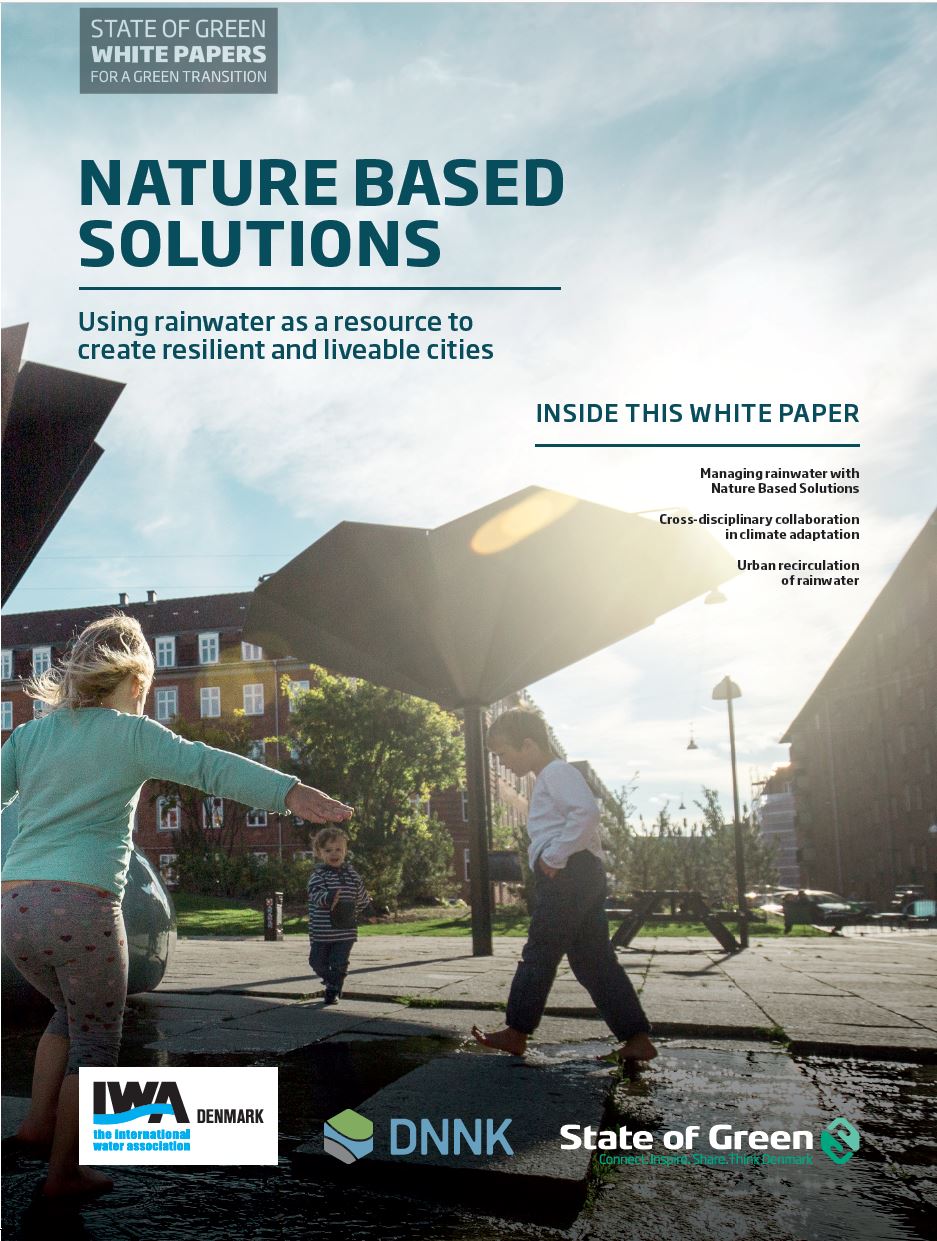Download our publication on nature-based solutions today
This article is part of our publication ‘Nature-based solutions’.
Download nowPerspective
Climate change adaptation
Nature based solutions


Due to the increasing amounts of large, impermeable surfaces in cities, the rainwater runoff from a city differs from the natural runoff pattern that occurs prior to urbanisation (as explained in chapter 2). When impermeable surfaces are the main types of surface present in an area, the runoff from several catchments will arrive simultaneously in certain sections of the sewers, where the capacity of the pipes is lower than the accumulated flow. The lack of capacity creates bottlenecks in the sewers, increasing the risk of flooding. When establishing NbS, peak runoff is delayed and reduced, which, in a majority of cases, also minimises the risk of flooding.
When establishing NbS in a densely populated city, it is important that the functionality of the base surface – including the carrying capacity – is preserved. This is possible when paving roads or streets with permeable asphalt, or when using permeable tiles in the pavement or at the parking lot.
Permeable paving allows transportation, storage and delay but in general, there is no evaporation. Considering infiltration from areas with permeable paving, experience from Denmark shows that it is possible to construct permeable paving both with – and without – infiltration. For instance, if the municipality is worried about the water quality of runoff from a large parking lot, it is possible to construct permeable paving with a membrane underneath and lead the runoff through pipes into a sampling well. Sampling can be carried out at a specified frequency that the municipality determines. This makes it possible to document the quality of the runoff from the parking lot and based on this, assess whether it will be possible to
allow runoff to be infiltrated in the long run.

This article is part of our publication ‘Nature-based solutions’.
Download nowIn general, the principle of the permeable road is to allow water in the road construction, as both the wear layer and the base layer are permeable. When using permeable asphalt to store and delay rainwater, several issues need to be taken into account. Firstly, it requires a mental leap to allow water
into the construction of the road – a major shift from traditional designs that ensure no water is entering the road construction.
When allowing rainwater in the road construction, the lifetime of the asphalt has to be considered as well as the lifetime of the permeability layer. What is the risk of the asphalt clogging, which will prevent infiltration of the rainwater into the construction of the road? How can this risk be minimised? In addition, traditional requirements need to be considered, such as noise reduction, rolling resistance (see figure 3) and not least, safety. Although this is still relatively new territory, Denmark has accumulated enough experience to present the first answers to these questions, thanks to a new method of maintenance and operations, which is a focal point when using permeable asphalt to ensure a long lifetime of the permeability.
Functional requirements of the road. Permeability is one of the requirements, which is ensured by periodical and thorough maintenance and operations.

publications
Climate change adaptation
+11